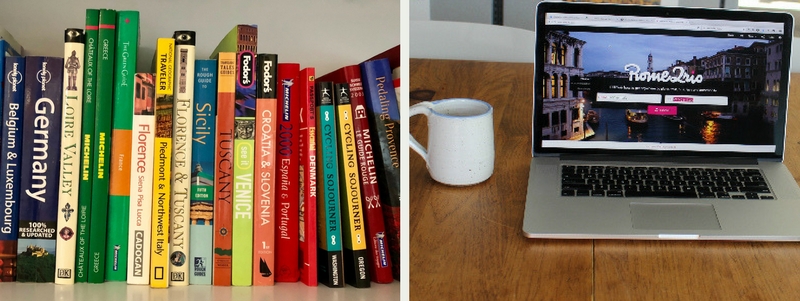A Guide’s Guide to the Best Travel Guide Books and Websites
With the massive amount of information available for travel planning these days, it’s hard to know where to begin. That’s why we suggest first considering what your specific needs are. Before jumping into your research and planning we suggest starting with a few general questions:
- For your travel, are you interested mostly in a packing list, weather information, and information on health issues, visas, hotels, restaurants and shopping opportunities?
- Do you need historical and cultural background information for your travel?
- Perhaps you are looking for detailed guides to museums, art, and architecture?
- Or, do you simply need a general overview of the country you are about to visit?
Some guidebooks are good for planning your trip but not for carrying around because most information can now be accessed online. So before you pack a book, have a look, “weigh” your choices (literally).
Our list of Tried and True Guide Books (and Websites)
Frommer began publishing travel guidebooks in the 1950’s for American GIs returning to Europe to visit the battlefields where they fought during WWII. He became the leading writer of guidebooks for that generation and for young baby boomers in the 1960s and 1970s.
Arthur Frommer’s books offered two innovations that distinguished them from traditional travel guides of the time. He ranked sights in order of importance to the visitor and he included budget travel suggestions, including readers’ suggestions on inexpensive places to sleep and eat. This latter innovation has been dropped in current issues but the ranking of sights is still a part of Frommer’s (as it is in the Michelin Green and Red Guides).
Steves published his first guidebook, Europe through the Back Door, in 1980 and has since become a publishing phenomenon with something like 27 published guidebooks today. Rick Steves took Frommer’s idea of promoting budget travel not, so much, as a way to save money but as a way to get close to the local culture. But Rick Steves took his idea one step further and actually prescribed specific itineraries to follow. He literally tells you how many “days” to budget for Rome and Florence, for example, and how to “spend” your time in each. He’ll even suggest where to go in Italy or France if you have only 7 days or 14 days.
Michelin provides extensive information about culture, history and landscape while the Red Guides have almost become the bible for hotels and restaurants, especially in France.
Rough Guides were started by Mark Ellingham in 1981. While traveling in Greece he met Martin Dunford, who was in Greece teaching English at the time, and on their return to the UK Mark, Martin and a small group of writers created their own guidebook series that aimed to combine a journalistic approach to description with a practical approach to travelers’ needs. The series was initially aimed at low-budget backpackers but have since evolved to recommend off-the-beaten path suggestions for travelers on all budgets.
Search Google for the term “world’s best guide books” or just “best guide books” and you’ll go straight to the Lonely Planet guidebooks. Indeed, they not only offer the best guidebooks, but they literally “cover the planet”. Ask any travelers to southeast Asia and they’ll tell you that Lonely Planet is their bible. Lonely Planet guides are packed with information, they’re compact and easy to carry, and they are updated regularly. They are so ubiquitous that you can find inexpensive used copies online fairly easily. Be sure you get the most current edition, though, if possible. You can also access the many of the Lonely Planet Guides’ e-book version through Amazon Prime. With “Kindle Unlimited” you can download any number of these guides and have them handy on the road.
The Cadogan guide series are not comprehensive (as are the Blue Guides or the Michelin Green Guides), nor are they budget guides (as Frommer or Rick Steves), but they are written by travelers with a passion and enthusiasm for travel that comes across in the book. They have wonderful historical narratives, anecdotes and stories that will inform and entertain you as you travel. The Cadogan travel guides are not always updated but even the older ones have good content and the writing is timeless.
Preparing for your next ExperiencePlus! Bicycle tour?
The Travel Planning Page on our website is full of additional information to help make your travel planning easier. We’ve got a host of information ranging from packing lists, to travel insurance, reading and movie lists, tips on how to get around, hotel recommendations and so much more. Should you have further questions regarding your next trip you can always get in touch with the ExperiencePlus! team and we’ll be happy to help!


